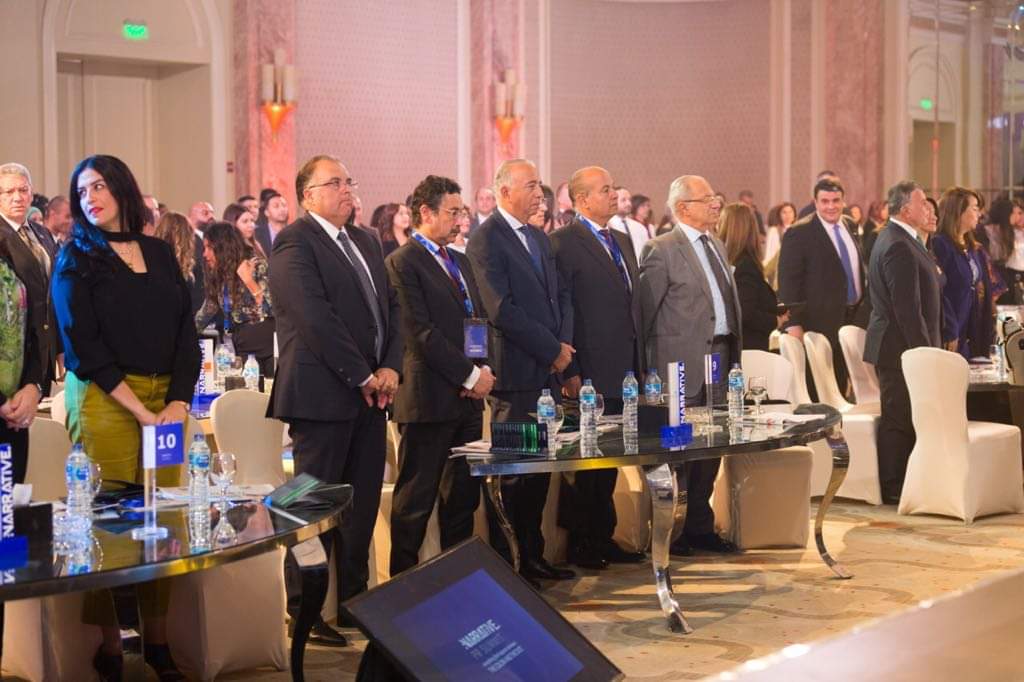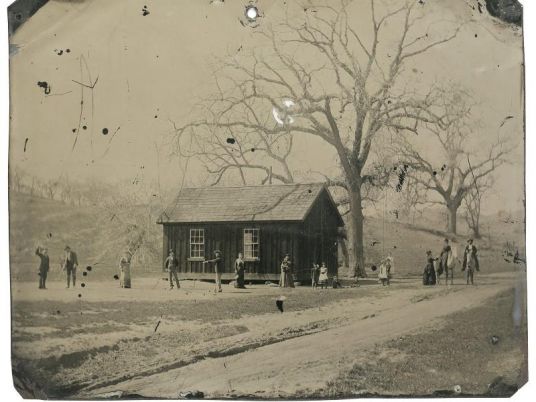This piece was written for Egypt Independent’s final weekly print edition, which was banned from going to press. We offer you our 50th and final edition here.
In early September 2010, a group of influential global leaders met at the White House in Washington, DC, to talk about peace in the Middle East. As part of diplomatic protocol, the arrangement of the leaders was carefully orchestrated into a symbolic “flying V” as they walked down the red carpet toward the media photo op that followed.
US President Barack Obama led the way, flanked by Palestinian President Mahmoud Abbas, Israeli Prime Minister Benjamin Netanyahu and Jordanian King Abdullah II, while former President Hosni Mubarak trailed in the back.
A couple of weeks later, the presidential “flying V” found its spotlight when the state-run newspaper, Al-Ahram published a blatant and seemingly unabashedly doctored photo of Mubarak leading Obama and their counterparts.
The original image, first published by Getty Images, was later altered by Al-Ahram to both bring Mubarak to the front of the group and to place his left foot forward instead of his right — the headline read “The road to Sharm el-Sheikh,” referring to the Egyptian Red Sea resort that hosted the second round of the Middle East negotiations.
The manipulated image quickly became a scandal within both the local and international journalistic communities — it was yet another clear-cut example of just how far state media was willing to go to defend the ruling regime.
But, unless you are one of Al-Ahram newspaper’s 16,000 or so employees, you’ve most likely never had the slightest glimpse of how political the image production process has been inside the institution.
Well, until now, that is.
For the first time in the institution’s 138-year-existence, two young filmmakers found themselves in the right place at the right time, with the right cinematic idea: “Crop.”
Co-directed by Egyptian filmmaker Marouan Omara and German video artist Johanna Domke, “Crop” is an experimental documentary shot entirely within the power center of the country’s images and news — Egypt’s oldest and arguably most influential government media mouthpiece: Al-Ahram.
In a nutshell, the 49-minute documentary film reflects upon the images in the 25 January Egyptian revolution, while placing it in relation to the “image politics” of Egypt’s leaders, from former presidents Gamal Abdel Nasser and Anwar Sadat to Mubarak.
Since Nasser nationalized the paper in 1968, Al-Ahram has been widely known to be something of a mouthpiece for the state. As the film suggests, when Mubarak was ousted and presidential elections were taking place, it was believed that a major power vacuum took place within the institution for several weeks.
“It still took about four months of phone calls, paper pushing, chasing stamps and bribes of course,” says Omara. “We shot around the beginning of June 2012 — there was major reshuffling going on in the newspaper at the time, so there were gaps in authority, which allowed us to get the legal approval to shoot inside.”
From the top-level executive office toward the smallest worker, the camera seamlessly glides the viewer through several floors, from editors’ rooms to the sales floor, the printing press, the kitchen, and even the loading dock.
Amid the typical cacophony of Cairo noise, the film befittingly opens with a black screen and the ethereal voice of the film’s fictionalized narrator, who is a photojournalist at Al-Ahram newspaper.
According to the directors, the narration is based on a montage of testimonies from around 23 journalists, photojournalist and media theorists who have worked within Al-Ahram and Egypt’s state or independent media over the past few decades.
“By creating a fictional character out of the many interviews we carried out, we intended to pay tribute to all of them and not elevate one specific person,” explains Domke. “We created a story in which everybody will be able to recognize a part of himself. We found it very important that the narrator is not visually presented, as it would define the narrator as one person.”
Through this technique, the directors metaphorically challenge the role of images. By framing images within Al-Ahram’s building, the film examines the fallibility of images and the impossibility of objective truth within photojournalism.
At the same time, this rather simple documentary engages viewers to challenge how we perceive images and who is or is not included in the frame of Egyptian state media and, subsequently, society.
One of the main underlying themes is the concept of censorship, which is to be expected. But what the film chooses to emphasize is the debilitating self-censorship exhibited by many workers within Al-Ahram’s institution. The documentary subtly highlights the importance of an active, independent media and citizen journalism in combating state propaganda.
As the film continues, the narrator presents facts regarding each president’s use of images. The narrator attests that Nasser understood the importance of media, images and, most of all, how to naturally pose like a leader.
Sadat, on the other hand, attempted to play the same spotlighted role, but instead, he was often perceived as an actor on a stage that transparently hosted big media events to win adoration from the public.
His media stunts included images of him as a Pharaonic figure with a pole in his hand, a simple man from the countryside with traditional clothing, a family man with his beautiful wife and children and, of course, his famous bathroom pose — taken by his private photographer, Farouk Ibrahim. In this, the former president posed like a “regular man,” shaving in front of the sink wearing only his boxers.
The latter image actually caused a great deal of harm to Sadat’s public perception, since Egyptians were simply not used to seeing a president posing in his underwear.
Having learned from Sadat’s mistakes, Mubarak kept a distance from the media and the public. There were no extravagant events celebrating the great new leader, as in Sadat’s era.
Newspapers would only print pictures of Mubarak at official ceremonies — typically, he would only appear in controlled environments. And moreover, his image would be doctored in controlled environments.
The film also mentions that during Mubarak’s era, Al-Ahram published a picture of the president on its cover nearly every day of his 30-year reign. The only thing that changed over the course of time was that he was aging, which the photo department in Al-Ahram dealt with by retouching his face to “reward him his dignity.”
Towards the end of the documentary, the narrator mentions the discussions in Al-Ahram about the institution’s protocol of framing. For example, those living in the City of the Dead in Cairo were too poor to be represented, a veiled girl could not be shown in the newspaper, and farmers were too far away and too traditional.
The bottom line is that the majority of the Egyptian population was cropped out of the frame of images for close to 60 years, proving that the world we see through the media lens bears almost no honest representation of society at large.
But when the 25 January revolution broke out and thousands took to the street armed with their camera phones, Egyptians consciously or unconsciously challenged and utterly disrupted the state-manufactured images of society.
The people at large took media into their own hands. The film presents the idea that during those 18 days and since, the Egyptian people began fighting the images that had been imposed upon them.
They were shaping, and continue to actively shape, their own images, free from the gatekeepers controlling the images we see, how we see them and when we see them.
For Omara, this is the most crucial aspect of the 25 January revolution. In a way, expression has been liberated and there is no turning back, despite endless political setbacks. Thankfully, technology and the Internet are forces far bigger than any political institution.
Overall, the film provides an excellent account of modern Egyptian political history, in addition to a plethora of stunning and captivating images from Al-Ahram. But what the young directors truly succeed in is presenting the film as a convenient metaphorical vehicle to describe the enervating and bureaucratic nature of Egypt’s state institutions.
In one scene, we see several employees approaching a reception desk of sorts where they punch in their time cards as they enter and leave the building. While Al-Ahram’s office is surprisingly immaculate and advanced, there is something striking about how the institution continues to use analogue and paper-based systems at a time when technology reigns king.
While we may have removed Mubarak, the film challenges the idea that we actually removed his state, which continues to function through robotic, centralized and censored mechanics, seen in almost every branch of government.
As the film ends, it suggests that no matter how the past was portrayed and no matter what the future brings, a major silver lining presented itself in the wake of the 25 January revolution: a populous vision of the way in which humans and technology can act together to generate our own self-determined images — ones that mirror our reality, instead of the scripted, manufactured frame presented by state-controlled media.
We are no longer caught in the suspension of disbelief, but rather, with technology, we can create own collective memories and, hopefully, dictate our own identity.
The film fittingly closes with the last stage of Al-Ahram’s production — a delivery motorbike out on the streets playing singer Abdel Halim Hafez’s song “Soura.”
Hafez sings: “Image, image, image/Everybody deserves an image/Whoever leaves the frame will be left out of the image.”


